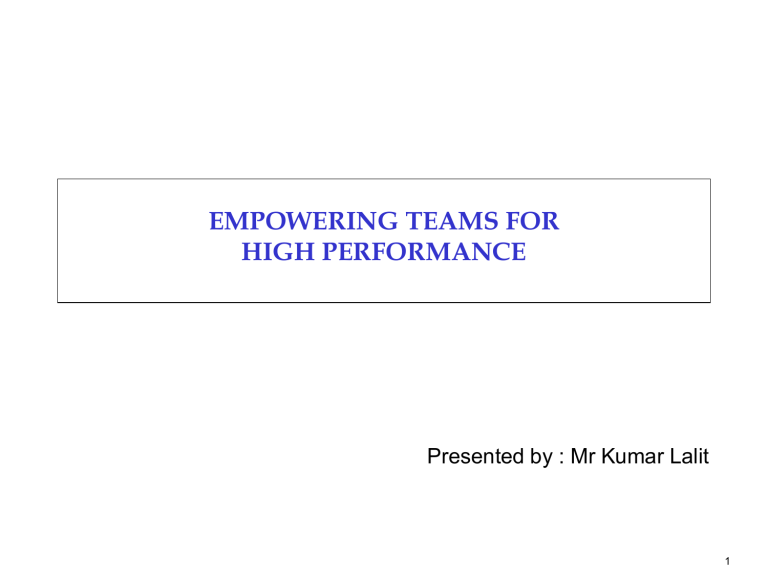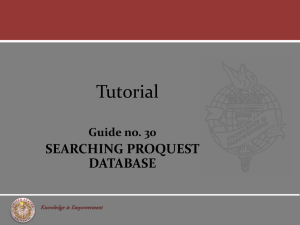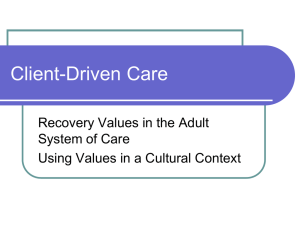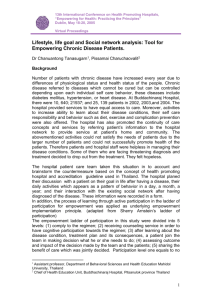Team Empowerment, by Mr Kumar Lalit, AGM & HR Head

EMPOWERING TEAMS FOR
HIGH PERFORMANCE
Presented by : Mr Kumar Lalit
1
Levels of Empowerment
•Employee empowerment is a term used to express the ways in which employee staff can make
autonomous decisions without consulting a Supervisor (Supervision less workplace)
•These self-willed decisions can be small or large depending upon the degree of power which the company wishes to invest in employees.
•Employee empowerment can begin with training and converting a whole company to an empowerment model. Conversely it may merely mean giving employees the ability to make some decisions on their own.
Three levels of Empowerment
Enabling
Involving
Encouraging
2
Employee Empowerment
Enabling emp. to make significant
decisions without having to refer to someone
Involving employees in taking
responsibility for improving the way of doing things
Encouraging employees to play
a more active role in their work
• Customer Focus
• Improving Services
• Innovation Culture
• Increasing productivity
• Gaining Competitive edge
Organizational Benefits
3
Empowering Teams
• Empowering , is passing on authority and responsibility.
• Empowerment occurs when power goes to employees who then experience a sense of ownership and control over their jobs.
• Empowered individuals know that their jobs belong to them. (sense of belongingness & accountability). Given a say in how things are done, employees feel more responsible. When they feel responsible they show more initiative in their work, get more work done and enjoy their work more.
Organizational values
/Leadership actions
Human resource systems
(e.g. rewards,training)
Empowerment
Continuous improvement actions
•Competitive quality
•Productivity
•Customer service
Organizational structural job design (Team’s & individual’s responsibility)
4
Mechanisms for Empowerment at Tata Motors
BSCs
Steering Meet
Apex Council
Innovation
Projects
CFTs
CLTs
Suggestion
Scheme
Kaizen
CFTs
Improvement
Projects
SDTs
Quality Circle
Suggestion
Scheme
Autonomous
Maintenance
5
(SDT) Self Directed Team - Details
• A Self Directed Team is a group of 12-15 employees who are responsible for a whole work process or segment that delivers a product or service to an internal or external customer .
• To varying degrees, team members work together to improve their operations , plan, control and handle day-to-day activities . In other words, they are responsible not only for getting work done but also for managing themselves .
• Employees in SDTs, work with minimal direct supervision (Self directed teams are not quality circles or cross functional task groups.)
6
Employee Meetings at Various
Levels
Safety
Quality
Delivery
Cost
Morale
+ Environment
Target Cascading
CVBU BSC
PLANT BSC
FACTORY BSC
CX BSC
51 Self Directed Teams
SDT SQDCM
TARGETS
7
Degree of empowerment
Team Empowerment Continuum
Vacation scheduling
Shift Planning
Cross-functional teaming
External customer contact
Managing suppliers
Continuous improvements
Quality responsibilities
Production scheduling
Team level
Equipment maintenance and repair
Training each other –Multi skilling
Housekeeping
Level 1
20%
Level 2
40%
Level 3
60%
Level 4
80%
Responsibility/Authority
The figure shows the empowerment continuum and tracks the approx. % of responsibilities a team assumes many of which were once reserved for or leaders,managers support departments
It shows a partial list of common responsibilities and how they might be sequenced to empower a team
8
Objectives
Objectives of Self Directed Teams in Tata Motors
• To own the planning and execution of all work in the team workplace
• To adopt constant changes in the work processes in all areas
• To contribute to the self-development of team members
• To enhance customer satisfaction through the active involvement of and ownership by operators in managing their day-to-day work activities and output
• To maximize the utilization of resources resulting to better quality, reduced cost and higher productivity
• To help the company remain competitive in the existing markets and reach out to global markets in future
9
Roles & Responsibilities
6 - SDT Point Leaders
10
Point Leaders
• Multiple point leaders are envisaged
• Each team will have:
• 6 point leaders, one each for:
S afety
Q uality
D elivery
C ost
M orale
E nvironment
• Members
• These point leaders will be responsible for all parameters in their respective areas. They will monitor these parameters for their subprocess and will work towards improving them
• The team will ideally comprise 12 - 15 team members
• There will be pre-decided rotational programme (rotating the point leaders within the team) so that all members are covered in a year
11
Roles & Responsibilities
SDT Team Members –
12
Responsibilities of Team Members
Participate in the team meetings effectively
Have wholehearted involvement in the activities of SDT in order to ensure its success
Co-operate amongst themselves and with the point leaders on issues like leave planning, conflict resolution and overall discipline
Achieve SQDCME targets as set out for the SDT by the Process Owner
To update and maintain work related documents
Expanded responsibilities to include:
Self inspection
Multiskilling (Flexibility to move to any machining / assembly work
station)
5S
House keeping
SPC / Pre-control charts
Maintenance related activities including autonomous PM / TPM
Machine setting and tool changing
13
Responsibilities of Team Members
Description of the activities to be done under SQDCME :
Safety
Follow all safety instructions at machine
Use safety equipment properly ( PPEs)
Ensure appropriate visible instruction are put on respective machine
Do the entire housekeeping at the machine and adjoining area
Quality
Check all dimensional parameters and ensure they meet required specification
Learn proper use of all tools and gauges
Get all instruments and gauges calibrated at scheduled intervals
Follow steps as mentioned in the process sheets
Learn & control critical parameters at respective stations
Analyze causes for dimensional inaccuracy
Delivery
Do regular PM to minimise downtime
Give suggestions and ideas for improving quality
Inform point leader of any deviation from standard specifications
14
Responsibilities of Team Members
Description of the activities to be done under SQDCME :
Cost
Work on eliminating waste
Minimise scrap
Ensure use of proper material
Morale
Convey training need to the ‘Morale’ point leader
Cross train other team members
Maintain and encourage the positive attitude and healthy working relationships with other team members
Environment
Correct disposal of waste
To ensure no oil spillage on shop floor
To follow the guidelines in EHS (Environment, Health & Safety)
Management System
15
16










